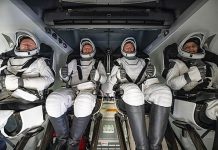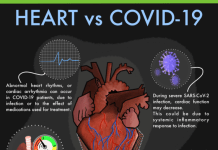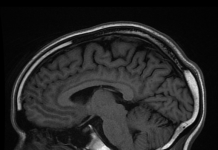Experimental Advanced Superconducting Tokamak (EAST) in China has successfully maintained a steady-state high-confinement plasma operation for 1,066 seconds breaking its own earlier record of 403 seconds achieved in 2023.
On 20 January 2025, the Experimental Advanced Superconducting Tokamak (EAST) facility in China (popularly known as China’s ‘artificial sun’) successfully maintained a steady-state high-confinement plasma operation for 1,066 seconds. The duration of 1,066 seconds is a key step in fusion research; hence this achievement is a milestone in the pursuit of fusion power generation. The EAST facility had earlier maintained a steady-state high-confinement plasma operation for 403 seconds in 2023. In order to allow nuclear fusion, the controlled fusion facilities need to reach temperatures over 100 million ℃ while maintaining stable long-term operation.
The Experimental Advanced Superconducting Tokamak (EAST) facility in China became operational in 2007. This is a tokamak device and has served as an open testing platform for scientists to conduct fusion-related experiments and research since it became operational.
EAST tokamak device is similar to ITER in shape and equilibrium but smaller, yet more flexible. It has three distinctive features: non-circular cross-section, fully superconducting magnets and fully actively water-cooled plasma facing components (PFCs). It has made significant progress in magnetic confinement approach of nuclear fusion, particularly in achieving record-breaking plasma temperature.
Use of magnets to confine and control plasma is one of the two main approaches to reach extreme conditions needed for nuclear fusion. Tokamak devices use magnetic fields to generate heat and confine high temperature plasma. ITER is the largest tokamak project in the world. Based in St. Paul-lez-Durance in southern France, ITER is the most ambitious fusion energy collaboration of 35 nations. It uses a ring torus (or doughnut magnetic device) to confine fusion fuel for long periods at high enough temperatures for fusion ignition to take place. Like ITER, the STEP fusion programme of United Kingdom is based on magnetic confinement of plasma using tokamak. However, the tokamak of STEP programme will be spherical shaped (instead of ITER’s doughnut shaped). A spherical tokamak is compact, cost effective and may be easier to scale.
Inertial Confinement Fusion (ICF) is the other approach to achieve extreme conditions required for nuclear fusion. In this approach, extreme fusion conditions are created by rapidly compressing and heating a small quantity of fusion fuel. The National Ignition Facility (NIF) at Lawrence Livermore National Laboratory (LLNL) uses laser-driven implosion technique to implode capsules filled with deuterium-tritium fuel using high-energy laser beams. NIF has recently demonstrated proof-of-concept of this approach that controlled nuclear fusion can be exploited to meet energy needs.
***
References:
- Hefei Institutes of Physical Science, CAS. News – Chinese “Artificial Sun” Achieves New Record in a Significant Milestone Toward Fusion Power Generation. Posted 21 January 2025. Available at https://english.hf.cas.cn/nr/bth/202501/t20250121_899051.html
- Experimental Advanced Superconducting Tokamak (EAST). Brief Introduction. Available at http://east.ipp.ac.cn/index/article/info/id/52.html
- Zhou C., 2024. Comparison between EAST and ITER tokamak. Theoretical and Natural Science,43,162-167. DOI: https://doi.org/10.54254/2753-8818/43/20240818
- Hu, J., Xi, W., Zhang, J. et al. All superconducting tokamak: EAST. AAPPS Bull. 33, 8 (2023). https://doi.org/10.1007/s43673-023-00080-9
- Zheng J., et al 2022. Recent progress in Chinese fusion research based on superconducting tokamak configuration. The Innovation. Volume 3, Issue 4, 12 July 2022, 100269. DOI: https://doi.org/10.1016/j.xinn.2022.100269
***
Related articles
- UK’s Fusion Energy Programme: Concept Design for the STEP Prototype Power plant Unveiled (7 September 2024).
- ‘Fusion Ignition’ demonstrated fourth time at Lawrence Laboratory (20 December 2023)
- Fusion Ignition becomes a Reality; Energy Breakeven Achieved at Lawrence Laboratory (15 December 2022)
***




































